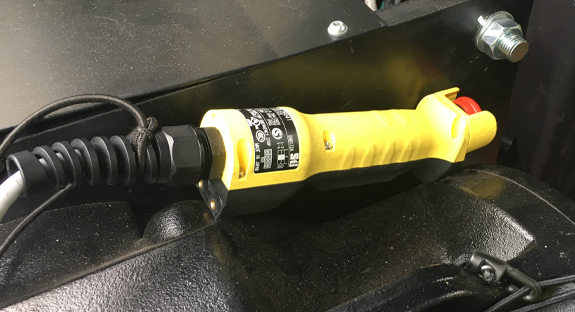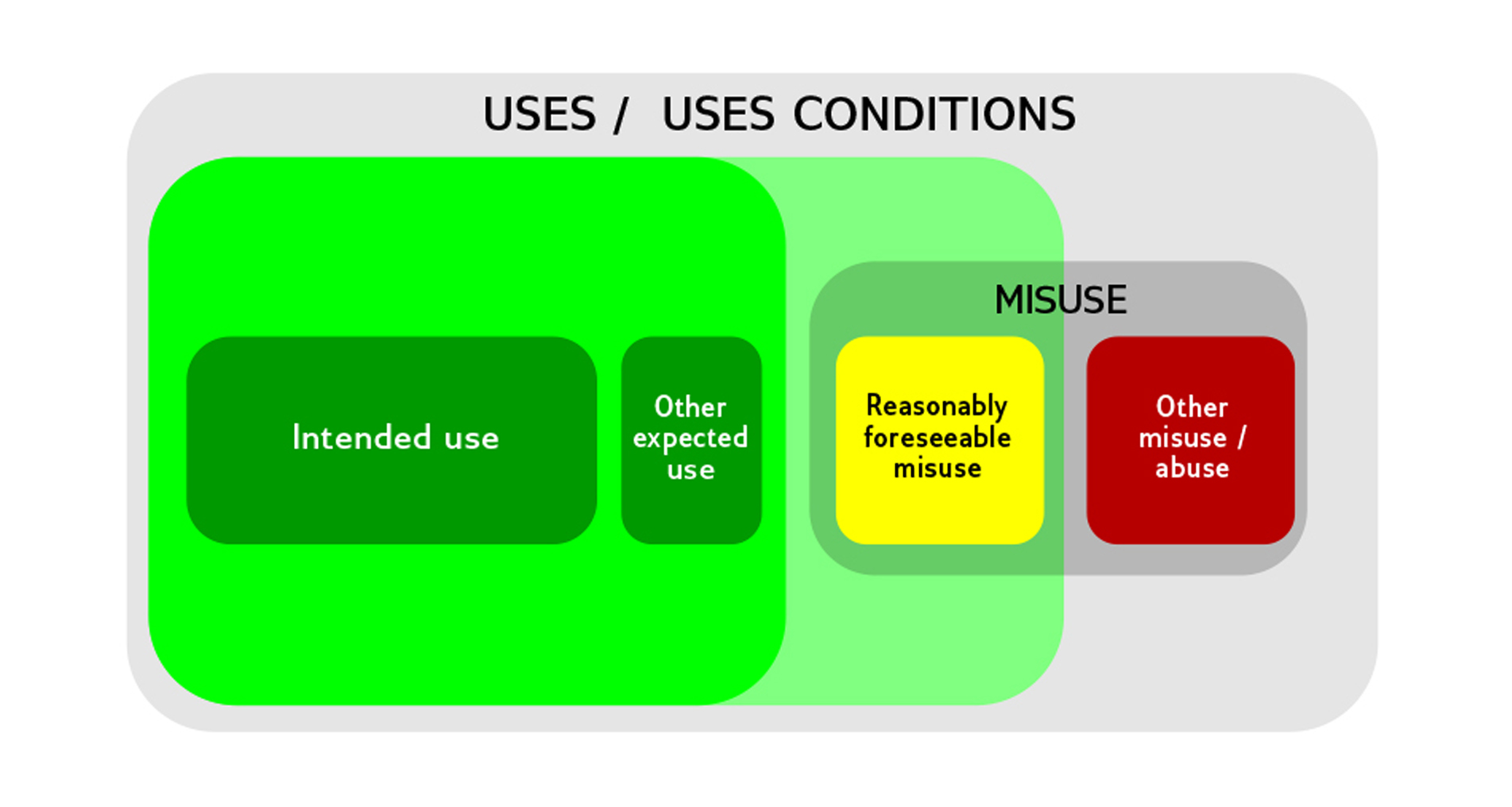If you place a 30 cm wide plank of wood on the floor and call for a volunteer to walk along it, you’ll probably find somebody who is willing to do it. However, if you place the same plank of wood over a ravine that is between two cliffs with a 200 m drop between them, it’s easy to believe you’ll have a lot more difficulty in finding someone to voluntarily walk the plank.
Even though the likelihood of falling off the plank would be about the same, in the first case the consequences of falling off the plank are what is called a slight and reversible injury, and in the second case the consequences would be death.
Let’s say that we go back to the ravine and replace the 30 cm wide wooden plank with a metal bridge that has 2 metre handrails and barriers over it, and then again ask for a volunteer to walk across it. Chances are we’ll be able to find someone to do this since the risk is much smaller.
Risk Definition
A risk is a function of two elements: the Probability of occurrence of harm [P] and the Severity of the injury [S] (generally it is represented with S * P).
When walking the plank on the floor, the estimated [S] is low.
When walking the same plank with a 200 m drop between two cliffs, the estimated [S] is high.
In both circumstances, [P] – losing balance and falling from the plank – is identical.
When walking a concrete bridge with high handrails, [S] is high but [P] is reduced.
Today we’ll talk about [S]: the Severity of the injury.
Estimation Parameters
In a machinery risk assessment, the risk associated with a particular hazardous situation depends on the severity of the injury (also called the severity of harm) and the probability of occurrence of that harm (which is itself a function of a person’s exposure to the hazard, the occurrence of the hazardous event and the possibility of avoiding or limiting harm).
The severity of the injury can be estimated by taking into account the severity of the injuries or damage to health (e.g., slight, serious, death) and the extent of harm (e.g., one person, several persons, etc.).
A simple estimation approach for the severity of the injury can be limited to two parameters:
S = 2 (high, severe, fatal, irreversible, etc.)
S = 1 (low, slight, minor, reversible, etc.)
When these two parameters are combined with the probability parameters of likely/unlikely, they form a 2×2 risk estimation matrix.
For stage machinery and automation risk assessments, a 2×2 matrix is probably too simple and it doesn’t really allow for good management of administration and engineering requirements, therefore, the S2 parameter is commonly split into two subsequent estimation categories:
S2 = 4 (fatal or significant irreversible injury)
S2 = 2 (major or irreversible injury)
S1 = 1 (slight or reversible injury)
The numbers associated with a parameter, for example S2 = 4, are the numeric representation of the estimated qualitive value and they should not be confused with a quantitative value.
Reversible, Irreversible, Fatal Injuries
When estimating the severity of the injury it is important define, with a sufficient level of detail, the meaning related to the chosen parameters.
If we decide to also split the S1 reversible injury parameter in two subsequent categories, and we define the parameters in detail – for example following the guidelines of EN 62061 – we can end up with four definitions.
Irreversible Injuries
S2 = 4 is a fatal or significant irreversible injury such that it would be very difficult to continue the same work after healing, if at all. Amputation of the upper or lower limbs and amputation of the hands/feet are always considered a significant irreversible injury.
S2 = 3 is a major or irreversible injury in such a way that it is possible to continue the same work after healing. This category can also include reversible injuries such as broken limbs.
Nonetheless, it is very important to assess the people exposed to the risk and to evaluate the repercussions of the injury in relation to the activity involved; for example a broken limb (categorised as S2 = 3) may be upgraded to S2 = 4 if the harm involves performers, acrobats or dancers, limiting their future ability to act as before.
Reversible Injuries
S1 = 2 is a reversible injury, which includes severe laceration, stabbing and severe bruising that requires attention from a medical practitioner.
S1 = 1 is a minor injury including scratches and minor bruises that require attention by first aid.
Again, a severe laceration may be categorised as S2 = 3 if the harm involves an actor or an artist, or if the people exposed to the risk are children.
The severity of the injury can be categorised in many other ways, for example:
Level 1: first aid treatment at the workplace (minor – small shallow cuts, bruises and pinches, abrasions, etc.)
Level 2: treatment by the doctor (moderate – cut requiring stitches, no damages to arteries or tendons, etc.)
Level 3: immediate hospitalisation or death (severe – death, falling from height, severe traumas, amputations, etc.)
Where is the plank?
When carrying out a risk assessment, in the initial risk estimation, we need to consider the most likely severity of the harm and taking into consideration the highest foreseeable severity even if the probability of occurrence is not high.
The likelihood of the gravity of the injury should be considered at all times: death can never be excluded if a person falls from a cliff with a 200 m drop, no matter if we are walking on a 30 cm wide wooden plank or a metal bridge with handrails.
The severity of the injury is directly related to the consequence of the hazardous situation and it can be reduced only with the correct implementation of the “substitution” and “isolation” risk reduction measures.
Let’s make a couple of examples.
First example:
We need to do the initial estimation of the severity of the injury for this hazard:
Hazard Type: Mechanical
Risk Origin: Falling Objects
Consequences: Crushing
Hazardous Event: Lifting operation with people in the hazard zone
Related Hazardous Origin: Incorrect design of machinery parts
Related Hazardous Event: Incorrect dimensioning of structural elements and components
Here, we can use an estimation matrix with 4 parameters and consider the severity of a fatal or significantly irreversible injury because of the impact caused by a heavy structure falling onto people’s heads. Hence, death cannot be excluded.
In this case, we can implement all sorts of risk reduction measures (over dimensioning of the load-bearing elements, apply passive redundancy on structural parts, implement load arrestors, etc.). However, in the estimation of the residual risk, the severity of the injury remains the same: S2 = 4.
The severity is still high because the “plank is still between cliffs that are 200 m up in the air”, which means that the risk origin conditions were not changed or removed.
The risk reduction measures implemented can only reduce the probability of occurrence.

Figure 1: Wooden bridge – Tsingy de Bemaraha National Park
Second example:
We need to do the initial estimation of the severity of the injury for this hazard:
Hazard Type: Mechanical
Risk Origin: Approaching of a moving element to a fixed part
Consequences: Cutting or severing
Hazardous Event: Performer Stage Lift – Lifting operation with people in the hazard zone, movement from floor level to stage level
Related Hazardous Origin: Uncontrolled movements
Related Hazardous Event: Unintentional drive start-up
We can again use the 4 parameters estimation matrix and consider the severity of a fatal or significantly irreversible injury because the risk of amputation of an upper or lower limb cannot be excluded.
In this case, if we implement a risk reduction measure, such as surrounding the stage lift with solid walls, flash to the stage lift platform leaving a gap less than 20 mm, and have placed the wooden plank on the floor then we have removed the risk origin conditions by using the “Substitution” method.
The substitution approach means that you can simply get rid of something that poses a significant risk, and in this case the removal of pinching and severing points. As a consequence, the severity of injury has been reduced with it, without the need to implement any risk reduction measures that are keen to reduce the probability of occurrence since it is now irrelevant.
A step below “substitution” is the “isolation” method, which implies the concept of keeping people away from the source of harm. Segregation of the hazard zones is one of the risk reduction techniques used to ensure “isolation”. However, since safeguards are often a removable item, this risk reduction measure is generally not considered inherently safe design.
Iterative Process
When we estimate the initial risk related to a specific stage machinery hazard, we need to always consider the “inherent risk, which is the severity of risk of a scenic motion operation when no control or risk reduction measures are introduced beyond the routing H&S procedures on stage.
If the inherent risk is low, further control measures are not required; however, if the inherent risk is medium or higher, risk reduction measures should be introduced to reduce the level of risk to an acceptable or tolerable level.
The process of the risk assessment is an iterative one. It requires that you first assess the level of inherent risk using a suitable risk matrix, and then introduce suitable and admissible risk reduction measures to reduce the risk to an appropriate level.
The entertainment and event industry differs from all the other industries and it challenges the engineering boundaries every day, deliberately exposing people to potential hazardous situations for the sake of the “wow” effect.
Learning how to risk assess stage machinery is becoming a vital skill, and as long as cliffs and ravines are available, creatives will continue to place narrower planks of wood as high as they can.





